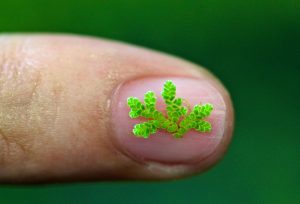
Following our efforts promoting open science and “community genomics” projects that have included the “Peoples Parrot” , community cactus, and our very own Bauhinia Genome, today we have a guest posting from the Transbiome team.

Following our efforts promoting open science and “community genomics” projects that have included the “Peoples Parrot” , community cactus, and our very own Bauhinia Genome, today we have a guest posting from the Transbiome team.

Despite the precipitous drop in the price of DNA sequencing, global credit crunches have tightened the science budgets able to properly take advantage of the potential of genomics. While this plummet in cost has led to an explosion of “mega-sequencing” projects carried out by large international consortia, it has also democratized and empowered what can be done outside traditional academia and research funding environments.

**All Cats (Microbiomes) are Grey? **Regular readers will have seen our interest in “community genome” projects, supported by crowdfunding and alternative means (fashion shows in case of the “peoples parrot”), and we’ve been pleased to see the Azolla fern and Cactus genome projects that we published guest GigaBlog postings from both achieve their funding targets.

Following our efforts promoting open science and “community genomics” projects such as the “Peoples Parrot” ** and Azolla “crowdfernded” genome , today we have a guest posting from Peng Jiang and Hui Guo at the University of Georgia covering their crowdfunding efforts to** sequence the first Cactus genome . While

Despite the precipitous drop in the price of DNA sequencing, global credit crunches have shrunk the science budgets able to properly take advantage of this. At least in the case of non-medical research.

Following our efforts encouraging open-science projects, such as the community funded “Peoples Parrot” and OpenAshDieback, today we have a guest posting from Fay-Wei Li and Kathleen Pryer from the Department of Biology at Duke University covering a crowdfunding effort to sequence the Azolla genome.
Bei vielen Buchverlagen herrschen noch immer Vorurteile über Creative-Commons-Lizenzen. Es raube Einnahmen, alles müsse dann verschenkt werden. Ausnahmen sind selten. Dirk von Gehlen über seine Erfahrungen mit dem neuen Buch „Eine neue Version ist verfügbar“. Im Wiki von Creative Commons gibt es eine Liste von Büchern, die unter Creative-Commons-Lizenz erschienen sind.
Nach „Mashup – Lob der Kopie“ schreibt Dirk von Gehlen sein zweites Buch. Und damit geht er neue Wege: Die Leser können beim Schreiben dabei sein, dem Autor Tipps geben und dabei zu sehen, wie das Buch entsteht. Dafür nutzt von Gehlen die Möglichkeiten des Crowdfunding. Dirk von Gehlen leitet bei der Süddeutschen Zeitung die Abteilung „Social Media/Innovation“, zu der auch das mehrfach ausgezeichnete junge Magazin jetzt.de zählt.

A Grassroots Funding effort in Puerto Rico enables genome sequencing of the critically endangered Puerto Rican parrot The rationale and scope for GigaScience has been to cover and provide a home for the growing number of studies producing and handling large-scale biological data, and this “big-data” data bonanza is not just due to well funded labs, but an increasingly globalized and distributed network of researchers.